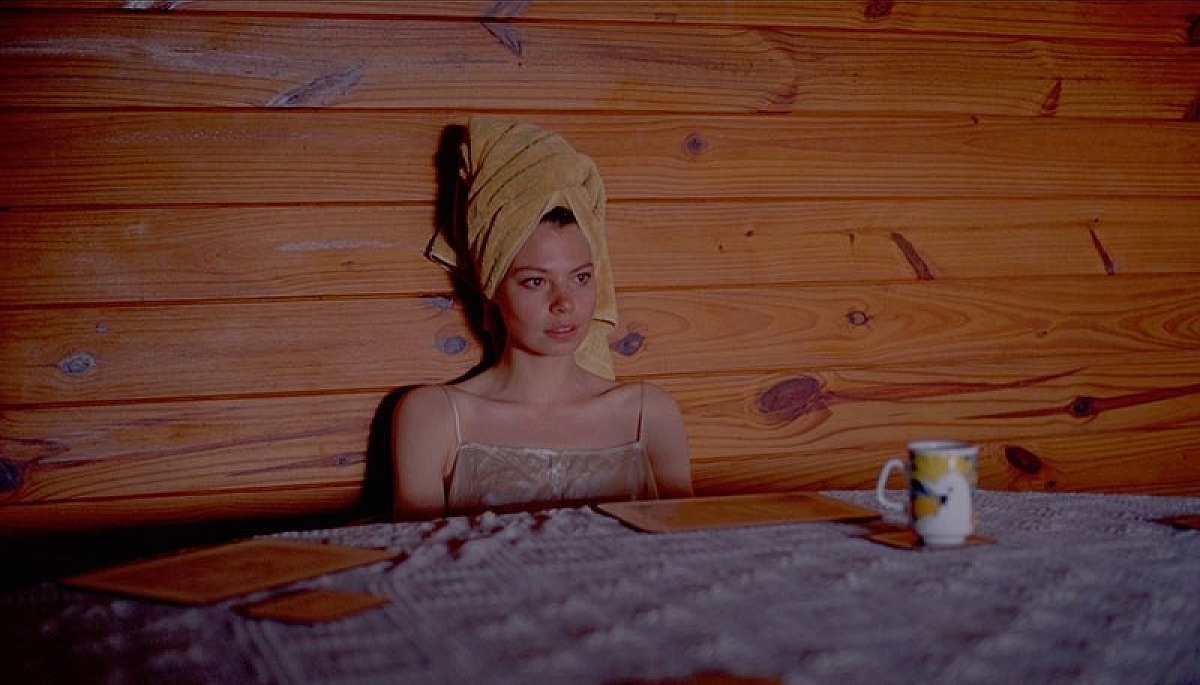DP Edward Goldner explores the vivid colors of EKTACHROME Film for KLLO’s 'Downfall' music video

“Ektachrome really captures what I love about slide film – the vivid and vibrant colours of magic hour”
Headline-grabbing news about the return of Kodak’s EKTACHROME Film inspired Australian cinematographer Edward Goldner to pull out a secret 35mm stash of the beloved celluloid stock to create unique visuals for Downfall, the latest music video from garage band KLLO, directed by Freya Esders.
“I was really excited to hear about Kodak reviving Ektachrome,” Goldner said. “I’ve always loved slide film, particularly Kodak’s 5285, which has such a distinctive quality to it. When Freya came to me with the KLLO treatment, we discussed formats and quickly came to the decision that we wanted to shoot the clip on film. I instantly thought of the Ektachrome which had been sitting in my fridge for a couple of years, occupying much of my vegetable drawer.”

DP Edward Goldner captures magic hour on Ektachrome 35mm, pictured with director Freya Esders
Downfall sees the Melbourne band – vocalist/keyboards Chloe Kaul and her producer cousin Simon Lam – travelling from the cold urbanscapes of the city to the golden hues of The Sunshine Coast. It follows Chloe travelling from a place she must escape, to an environment of nostalgic familiarity – culminating in a field of burning sugar cane, symbolizing the release of feelings that have held her hostage.

Ektachrome held the wide exposure range of the burning cane field
“The concept of the music video was drawn from Freya’s own experience having moved to Melbourne from a much smaller coastal region in Australia. We wanted to illustrate how living in the city can be isolating and erode you and to contrast that with the comfort of going back home,” Goldner said. “At its core, my role was to create two very different visual worlds. I decided to shoot the first sequences in Melbourne on KODAK VISION3 500T to create a colder, more muted palette. For the scenes of Chloe returning home to Queensland, we wanted things to feel natural and champion the vibrant colors in the environment. The Ektachrome felt perfect for this.”

The Melbourne sequences to have a much cooler, desaturated feeling, delivered by Vision3 500T
The music video for Downfall was made on a very small budget with a minimal crew – essentially just Esders, focus puller Jesse Minter, Goldner as the cinematographer, and the artists themselves. The entire production was shot 3-perf in natural/existing light, often during magic hour and the approaching dusk. The Melbourne scenes were shot using a Moviecam Compact MK-II fitted with Zeiss Standard lenses, while the Ektachrome scenes used Zeiss Superspeeds. The camera and lens package was supplied by Cameraquip in Melbourne.

KLLO’s "Downfall" was shot only with natural/available light
“500T 5219 is generally my go-to film stock because of its versatility and beautiful grain structure. For the Melbourne scenes, I underexposed the 500T to push the texture, which would provide another contrast to the Queensland scenes,” Goldner said.
“Kodak Ektachrome is extremely fine-grained. The beauty of shooting with it is that it gives you amazing saturated colors. We consciously selected locations and wardrobe pieces to hero Ektachrome’s color reproduction, particularly the iconic red in images shot on Kodak slide/reversal film. There’s a certain vibrancy to reversal film, which came through in the magic hour sequences that we shot.

KLLO’s lead singer Chloe Kaul donned red costume in homage to the iconic Kodak Ektachrome red.
“However, when we came to shoot the burning cane field during last light, I was quietly terrified about the huge exposure range of the fire and the fading light. Upon viewing the rushes, I was not only relieved but completely blown away by how well the Ektachrome – especially with it being 100ASA and color reversal – held everything.”

Ektachrome held the wide exposure range of the burning cane field
The Ektachrome 35mm reversal stock was sent to Dwayne’s Lab in Kansas for E6 processing, while the 500T 5219 negative was processed by NegLab in Sydney. Park Road Post in New Zealand performed a 2K scan of the footage, after which the clip was cut by Cameron Hales and graded by Ciara Gallogly at Method Studios in Melbourne.
“It was refreshing to fully commit to what we got in the emulsion,” said Goldner. “Both Freya and I talked about this a lot leading up to the shoot, and we endeavoured to cast away any caution and conservatism. The beauty with film is that you make a decision and commit to the results it yields. It encourages you to be more honest with your initial intentions. The Ektachrome also just has something so unique about it: even if you tried to emulate it digitally, no matter how many LUTs you might have, you’d be hard-pressed to get the same result.”

DP Edward Goldner captures magic hour on Ektachrome 35mm
When it came to post-production and the final grade, Goldner said he, the director and the artists, kept with the look baked into the 500T negative and Ektachrome reversal stock.

KLLO’s "Downfall" was shot only with natural/available light
“We didn’t feel the need to alter the look much from what we captured in-camera. The whole process, from shooting on film with available light, through to the grade, was very organic. It was such a rewarding experience drawing inspiration from the film stock’s innate, unique qualities.”